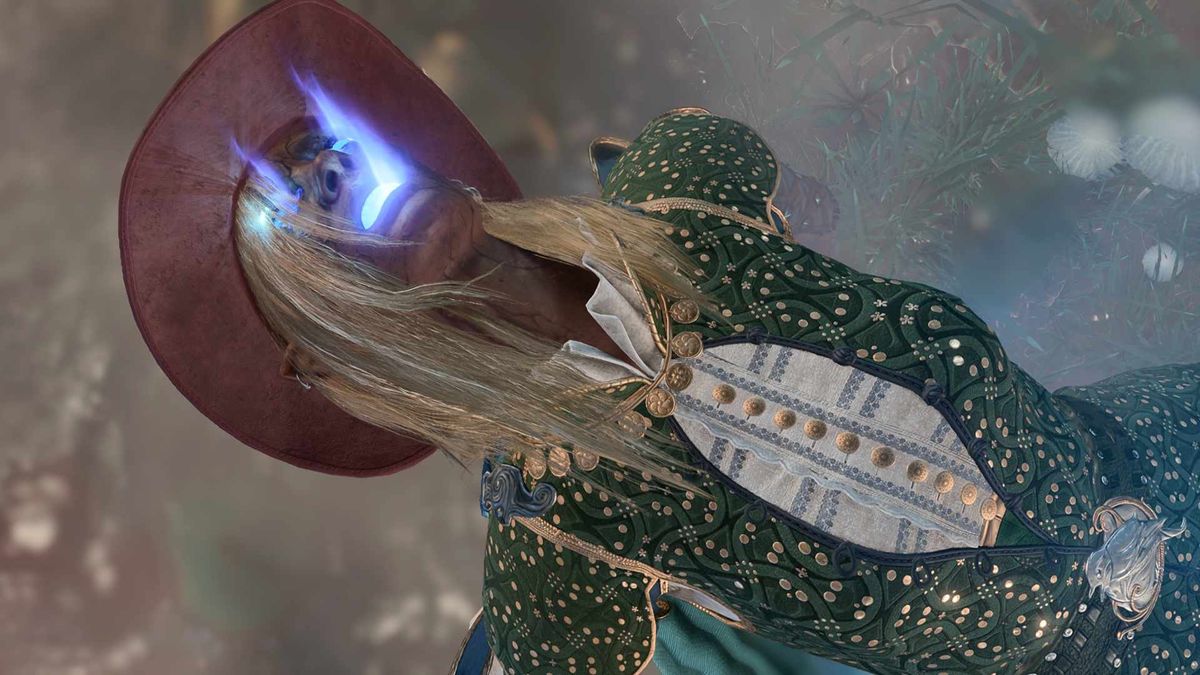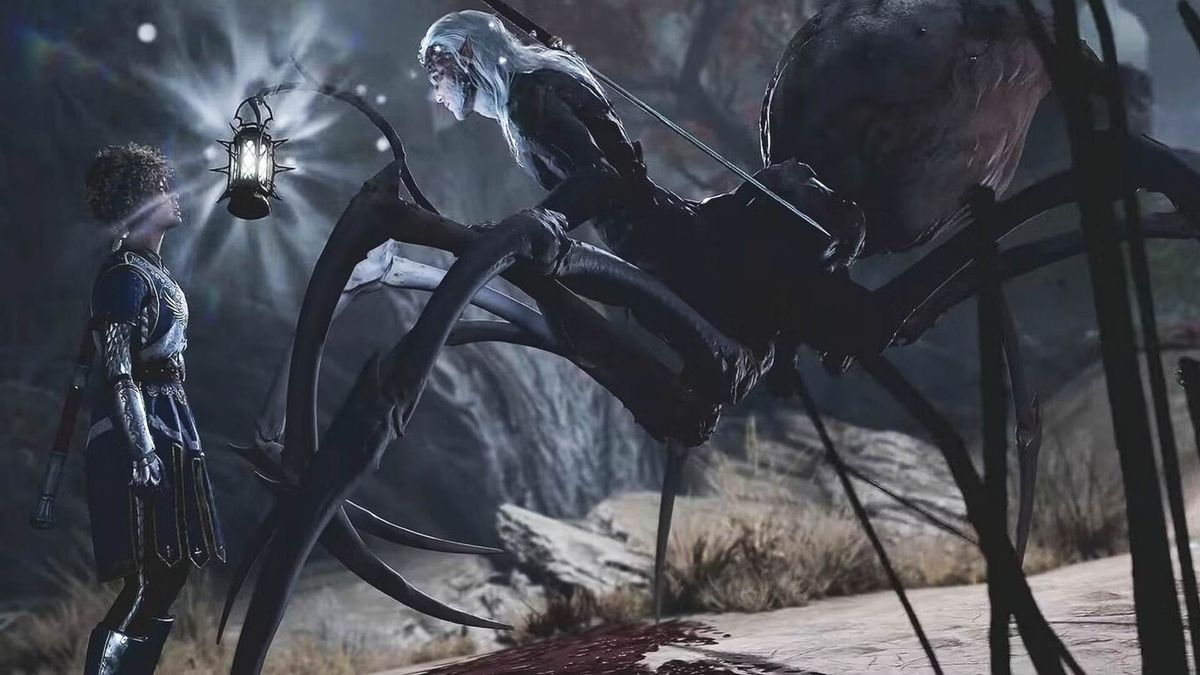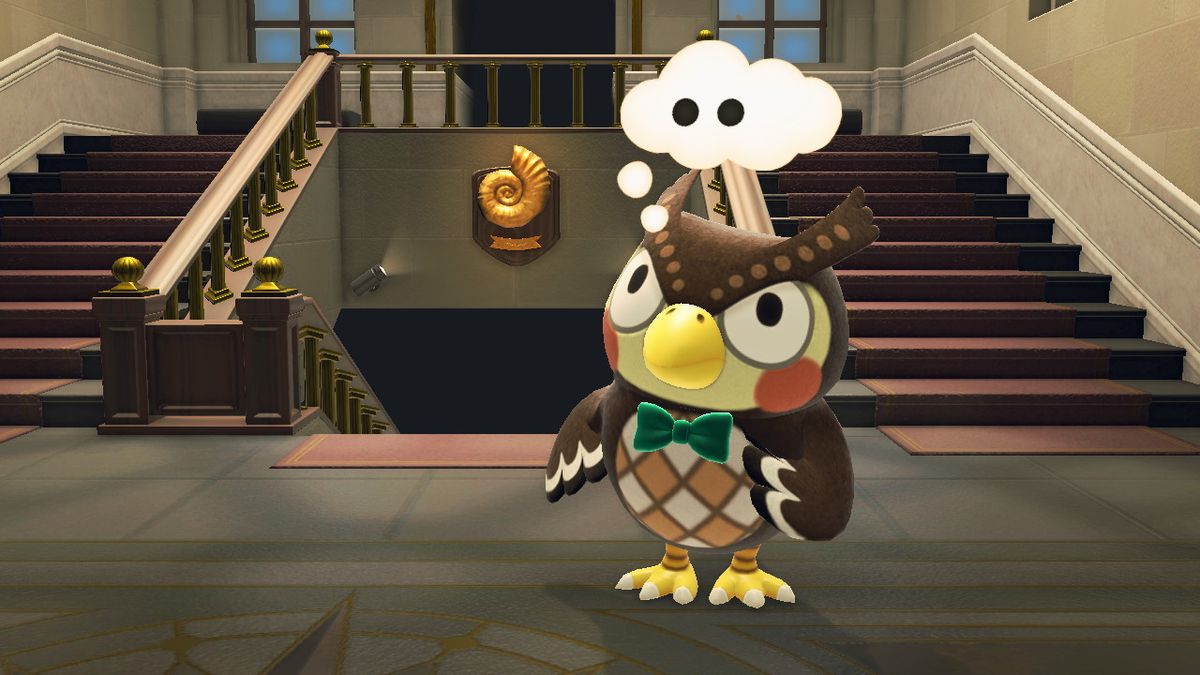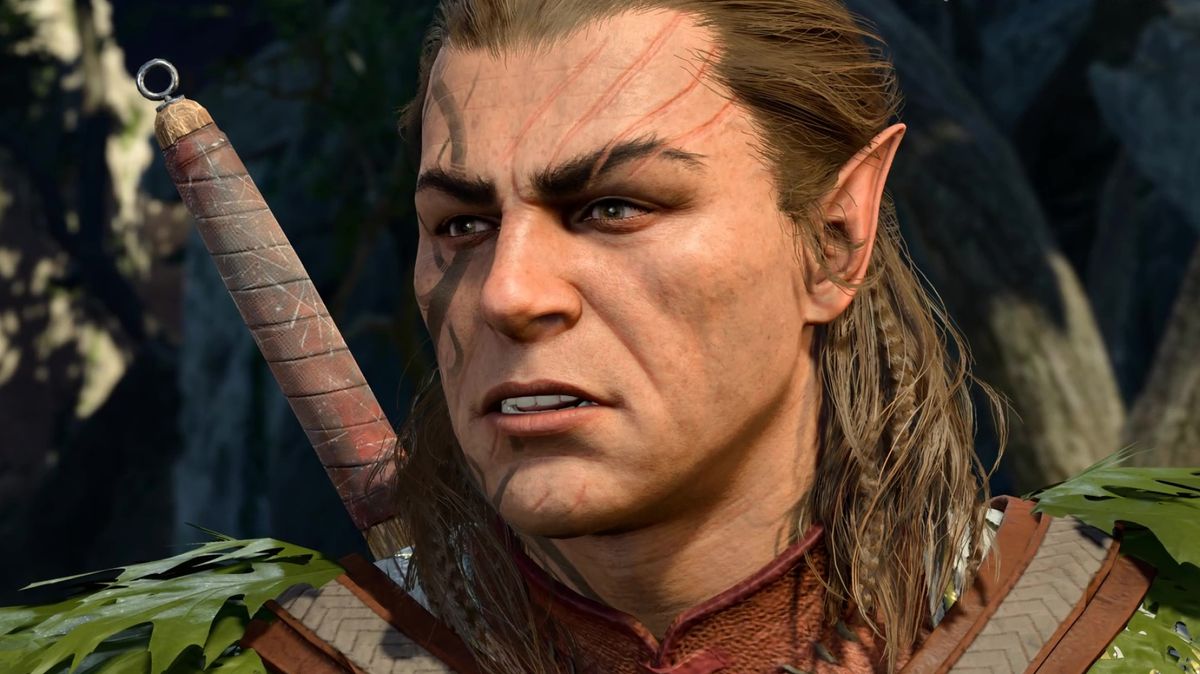343 Industries has now been at the helm of the Halo franchise for longer than Bungie ever was. And as difficult as it can be to wrap your head around the unrelenting march of time, I need you to focus. With Halo Infinite, we will see what 343 is able to produce having spent a decade living in Master Chief’s head – and there’s a lot of ground to cover. As associate creative director Paul Crocker tells me, Halo Infinite is “the biggest story we’ve ever told, the most personal story we’ve ever told, and the biggest game we’ve ever made.”
Having spent time with the Halo Infinite campaign myself, I now wonder if this is the moment so many of us have been waiting for. 343 is now in a position where it can step out from under the long shadow cast by Bungie’s legacy and set its own vision for the future of the Halo universe. To accomplish such an audacious task? Well, first the studio had to go back to where it all began.
Back to basics

“From the way we looked at the development of Halo Infinite, it was: Learning from our past as 343, looking to the original Halo games, and just trying to encapsulate the spirit of those games in a new title,” says Crocker. “And at the same time, ensuring that we weren’t throwing anything away.”
Internally, Halo Infinite is referred to as a ‘spiritual reboot’. Crocker admits that the description “means different things to different people on the team.” As far as I’m concerned, it means that Chief has a tightrope to walk in that chunky MJOLNIR of his. 343 may be looking back at the fundamentals that underpinned 2001’s Halo: Combat Evolved for inspiration, but it has both a new generation of Game Pass-equipped players, and series veterans over-encumbered with decades of nostalgia to contend with. Serving both groups with one experience was never going to be easy.
After playing four hours of Halo Infinite so far, I couldn’t possibly tell you whether 343 has achieved its broader directive of delivering a “direct follow-on from Halo 5: Guardians”, that’s also capable of being “a jumping-on point for new players.” But what I can say is that the studio has absolutely succeeded in not only capturing the essence of Combat Evolved, but in modernizing it.
Crocker continues: “We really want people to feel the way they did when they first played Halo: Combat Evolved. Everyone remembers when they first crashed onto the mysterious Halo ring and how they felt as they looked around that world. That’s the feeling and emotion we want players to experience again. Capturing that has been our goal ever since we started this.”
Combat Evolved

When Crocker says “our goal was to try and recreate that feeling you had when you first played Halo 20 years ago”, I think it’s a direct appeal to those who may have been turned off by the linearity of Halo 4 and split-focus of Halo 5: Guardians. But what that statement fails to convey is just how expansive 343’s creative vision is for Halo Infinite, or how impressive Slipstream, the new proprietary game engine that had to be engineered to support it, truly is.
“We wanted to basically build that same kind of world, but knock down the walls that kept you where you were,” he continues, pointing back to the legacy of Installation 04 and its second mission, ‘Arriving on Halo’ as a touchstone. “Because even though it felt huge and open at the time, it isn’t when you go back and look at it.”
To achieve this, Halo Infinite is set across an open and expansive world, a playable space that the studio estimates is several times larger than Halo 4 and Halo 5 combined. Notice I didn’t string the words “open” and “world” together there? The truth is, while Halo Infinite has clearly taken great inspiration from modern open-world trends, its space is more accurately described as a “wide-open world”. There’s a tangible difference – I promise.
When Master Chief steps out onto Zeta Halo with the war against the Banished already lost, he’s fighting to rally the scattered remnants of the UNSC together to save the human race from extinction. In this context, a linear campaign just wouldn’t have made sense. Instead, Chief is fighting for inches of ground against an embattled enemy force. You’re cordoned off into sprawling, self-contained areas of Installation 07; from there, you reclaim occupied UNSC Forward Operating Bases, shut down massive Banished facilities, and rally Marines you find along the way to your side.

How the world works

Halo Infinite’s wide-open world feels like a throwback to a simpler time. We go in-depth on how exploration and progression works in Zeta Halo.
When you’re satisfied with the progress you’ve made in an area, you take on a story mission. Once completed, it will open access to a new and massive section of Zeta Halo. Once you capture an FOB in a new sector, a manageable number of assassination targets, side-objectives, collectibles, and resources (necessary to both upgrade your equipment and to make better weapons and vehicles available for requisition) will appear on the map around you. This pacing and progression is perfect for Halo.
“We designed the game to be both a linear story which you can progress through, but we also designed freedom around that path. So you can go and have fun being Chief, doing whatever you want to do in the world. It affected how we designed the story and it affected how we designed encounters – everything,” Crocker continues. “But early on, we hit on this idea that we wanted to not hold the player back. We want to always say ‘yes’ to the player. So if the player wants to do something, the game will always say ‘yes’. It’s the story that’s stopping you from progressing physically, but it’s very easy to move through the story.”
The story is indeed easy to move through. It’s so sharply written and structured that I found myself propelling through four of the linear campaign missions at breakneck velocity, bouncing between cinematic storytelling beats and handcrafted sandbox action in such a way that made me feel like it were 2004 again – the only thing missing was my old friend the M7 SMG, as (sadly) dual-wielding has not made a return from Halo 2.
But as great as these core campaign missions are, you know what you’re getting – they are classic Halo. They’re Bungie’s Halo. What I instead want to focus your attention on is something Bungie was never able to achieve with Halo, following its decision to chase a new Destiny after the release of Halo Reach in 2010. And that’s how 343 chased the dream that was presented in the opening missions of Combat Evolved back in 2001 and made it a reality 20 years later.
Super Soldier Base Assault

A waypoint the Halo Infinite campaign team always had in sight was ‘Super Soldier Base Assault.’ It’s a directive that, as Crocker tells me, meant 343 “always wants you to feel powerful like Chief, everywhere you go in the world.” I felt that in my bones while playing Halo Infinite, regardless of whether I was stumbling across dynamic encounters with roving gangs of Banished (that’s an army made up of Grunts, Jackals, Elites, and Brutes that lost faith in the Covenant), reclaiming FOBs, or assaulting the massive strongholds that appear in each segment of the map.
It’s in these Banished bases where we get to see how Halo’s physics-driven, sandbox combat truly works outside of the structured, carefully-crafted missions it has always thrived in. And against all odds, it works. It works really, really well. Here’s just one example I could give you of many: In an early area of Zeta Halo, there’s a Banished stronghold by the name of ‘Ransom Keep’ – a facility that’s appropriating UNSC materials. Chief’s mission is to get over the walls that enclose it, destroy the silos inside, and empty it of Banished-loyal Sangheili warriors. How you do that, well, that’s up to you.
Steve Dyck, character director of Halo Infinite, tells me that one of the biggest challenges for 343 was working around the new “omni-directionality” of combat. Which is to say, how “the player can come at combat from any angle, with any weapon, any vehicle, with Marines” or whatever it may be. “It’s a challenge that we didn’t have to really worry about as much in the past,” he adds.
When speaking to the breadth of opportunity in Halo Infinite’s more freeform combat, I think Justin Dinges, the campaign art lead, inadvertently spoke to why Halo Infinite clicks into place where 343’s other efforts didn’t quite. “When you ask somebody how they played a location [in Halo Infinite], you get different stories… I’ve worked on Halo 4 and Halo 5 and now Infinite. In the previous games, nobody really had different stories, because it’s always like, ‘well, I picked up the gun that was left there for me and I went in and I shot the guys that were left there for me’. And now you get multiple stories from players, which is really cool for the Halo franchise. That’s something that we haven’t seen much in the past.”

Explaining the delay

Halo Infinite was supposed to launch alongside the Xbox Series X. Here, the devs details how the 12-month delay helped turn Halo Infinite into 343’s “best game”
As spacious as the legacy Halo games could be, they were always deceptively handcrafted. The sandboxes may have felt open, but your choice of weapon was limited to what a developer put on the ground. Epic Warthog runs may have felt free-form, but they were ultimately running along interconnected, predetermined pathways. Despite this, the legacy combat sandboxes had the capacity to feel personal. There’s a reason why people still talk about missions like The Silent Cartographer and Assault on Control Room from Combat Evolved, Outskirts and Delta Halo in Halo 2, and The Ark and The Covenant in Halo 3.
When Halo’s sandbox combat is working at its best, it feels as if it could generate an endless array of stories. That’s a quality that Halo 4 and Halo 5: Guardians lacked, but one Halo Infinite has reserves of. Now you really do have the freedom to push the sandbox beyond its limits and it’s captivating. Well for us it is, but it sounds like a nightmare for the people who were charged with bringing it together at 343.
“The balance for us was trying to move away from those handcrafted experiences but still keep the same tight combat feel that Halo is known for, and make it work with the player at the centre of making all the choices in that space,” says Crocker. Dyck adds that “the functionality and additional manoeuvrability of the Grapple Shot made things very challenging from a combat [design] perspective.”
Whether you’re assaulting Banished structures, capturing FOBs, or just having fun in the world, the amount of choice you have in Halo Infinite is staggering… You could sit outside of a base and pick Jackals off at range with the S7 Sniper Rifle. Or you could use Chief’s grapple hook to stealthily hoist over the defensive perimeters, get onto a roof, and start raining M41 SPNKR rockets down on unsuspecting Brutes and Grunts. Hell, if you’ve earned enough Valor to requisition it at an FOB, you can call-in a Warthog, pack it with UNSC Marines wielding power weapons, and drive right on up to the front gate. Whatever your approach, carnage will typically ensue.
Halo is a feeling

What’s impressive is that Infinite always feels like Halo. The combat is tight and methodical, a frantic rush of gunfire, grenades, and melee strikes. Your peripheral vision is filled with swarming enemies and explosions, the Grapple Shot allowing you to pull weapons into your hands from the ground when you run out of ammunition or reel yourself into enemies and out of danger – perfect, should a Hunter show its face or a particularly well-armed Brute appear from a drop-pod. Combat is open-ended, and yet it retains its crafted feel – as if 343 designed these encounters specifically for you. I think that’s on the strength of its artificial intelligence.
“We had to do a bunch of stuff underneath the hood on the AI side to make sure that it was accounting for what the player was doing, what they were bringing, and what weapons they had,” says Dyck. “And they’ll try and coordinate their actions against the player – they’ll try and grab the best weapon to try and counter what the players brought.”
“At the end of the day, it’s a big balancing act. We want Master Chief to feel like a super soldier – we don’t want him to grapple over a wall and immediately get slapped down by a bunch of Brutes,” Dyck laughs. “The way we handled it was to scale from small to large. You know, what happens if you’ve got to battle with three Elites and a couple of Grunts and you bring anything? Maybe Chief feels a little OP, so maybe we need to give the AI some more behaviours, access to more weapons, and things that they can counter the player with. And then we just build on that; we say, well, what if the player brings a power weapon or what if the player decided to sit outside a base and plink away at the AI inside?”
“We had discussions about that,” he continues, lingering on the idea of players taking encounters slowly. “We were like, ‘do we want to allow this, or do we want to be heavy handed and drop a Berserker right next to the player and have them give the Master Chief a slap?’ And ultimately, we were like, ‘No!’ Because we want to support what the player wants to do. So if the player wants to sit outside a base and snipe because they have a sniper rifle then we’re like, cool, let’s let them do that. Now let’s give the AI some behaviours so that they can fight back,” says Dyck.

Get connected

Here, 343 details why Halo Infinite’s Grapple Shot was one of “the most controversial” new additions to the game for the campaign team
The element that makes this unstructured sandbox combat ultimately work for Halo Infinite is that no matter your approach to a situation, it’ll eventually run its course. You’ll run out of ammo for your power weapon, be rushed by ranks of Banished, or find that your new UNSC friends have been pulverised by a stealth Elite running riot with an Energy Sword. If you aren’t switching up your tactics every 30 seconds, there’s a good chance the AI will give Master Chief one of those “slaps” Dyck warned us about.
There’s still a lot of Halo Infinite’s campaign left for me to play, but I’m impressed with everything I’ve seen so far. I’m invested in Chief’s story again for the first time in what feels like a long time. I’m utterly entranced by the freedom to explore a Halo Installation after two decades of wondering what it would be like. And I’m having a great time shooting wise-cracking Grunts and towering Brutes, with Halo Infinite finding a way to respond to whatever I throw at it.
It feels like Halo is back; like 343 has finally figured out what makes Master Chief work and why the original Bungie games are so beloved. The foundations of the past are here, but it’s the way that 343 has built on top of them that has the potential to make Halo Infinite legend. “The people who really, really love Halo have this emotional connection to it. We wanted to rebuild that emotional connection in the way we structured the game, the way we told our story, and the way we integrated the sandbox,” says Crocker. “Halo is as much a feeling as it is a game.”
Access to Halo Infinite on Xbox Series X was provided by Microsoft. Outside of our hands-on time with the campaign, we’ve also been playing the MP. Read our Halo Infinite multiplayer Season 1 first impressions right here.
 Games News games, movies and TV you love.
Games News games, movies and TV you love.



